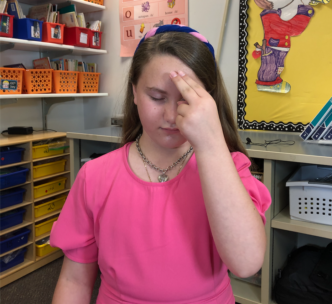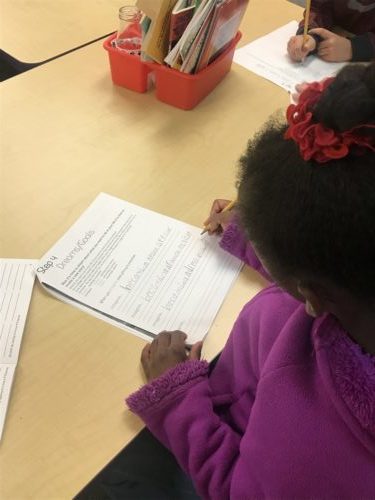 Many people are curious about Emotional Freedom Technique (EFT), also called Tapping. Tapping is a tool anyone can use to help them deal with difficult emotions in life. All ages can be taught to use tapping, as young as 6 or 7 years old or as old as 100! It’s a simple, yet effective technique that can calm your nerves, relief anxiety, help you move through difficult emotions, and even help relieve physical pain and other ailments.
Many people are curious about Emotional Freedom Technique (EFT), also called Tapping. Tapping is a tool anyone can use to help them deal with difficult emotions in life. All ages can be taught to use tapping, as young as 6 or 7 years old or as old as 100! It’s a simple, yet effective technique that can calm your nerves, relief anxiety, help you move through difficult emotions, and even help relieve physical pain and other ailments.
What is EFT/Tapping?
Tapping is based on the theories of Chinese medicine where they believe that energy runs through certain “meridians” (also might be called pathways) of the body like blood runs through veins and arteries. When the energetic pathways are blocked, illness happens. Energy blocks can be caused by stress and trauma. Inserting needles on those meridian points will release the energy causing the block, creating wellness again. In tapping, the same belief is true except we tap lightly on those points instead of using needles. There are various meridian points on the body that are related to specific emotions. When you tap on those points while talking to your subconscious, emotions are released and you can move into a state of comfort and wellness.
How to begin tapping?
Tapping is easy to learn, it just takes a bit of practice. You can watch these videos at www.theimagineproject.org to begin learning and practicing. Google EFT/tapping to find hundreds more video examples. Some practitioners have altered the pattern some, you can make it your own, but here is the simple overview:
- Ask yourself how your feeling. Angry? Sad? Ashamed? Sometime else? Measure how strong that emotion is on a scale of 1-10, 10 being intense. Also, feel where you feel that emotion in your body, maybe in your stomach, chest, throat, head, somewhere else? Just be aware of that physical sense in your body.
- Begin by using two fingers from either hand and tap with medium pressure just above your eyebrow to the inside, closer to your nose. Keep tapping as you say, “Even though I feel angry (or whatever emotion they named), I deeply and completely accept myself.”
- Now tap on your temple near your eye and say it again, “Even though I feel angry, I deeply and completely accept myself.” Now tap under your eye and say it again, “Even though I feel angry, I deeply and completely accept myself.” Now move to under your nose, tapping and saying, “I’m so angry.” Move to under your bottom lip and repeat. Now tap just under the middle of your collar bone, either side of your chest, continue to state your emotions (you can use more than 1 emotion). Move to under your armpit about two inches down, keep making about your emotions and tapping.
- Now move to the crevice or indentation on the top, pinky side of your hand and tap there while saying a profound statement about the emotion you are feeling. “I am really mad!” Stay tapping on that spot on the hand and look up with your eyes, then down. Look to the left and then right (do not move your head, just your eyes), make a circle with your eyes, go back the other way, hum a few notes of any tune you want (or just hum) and then count to five, then hum again. This is a critical part of the process, because it triggers different parts of the brain where emotion is often released.
- Now start all over again on the face and continue on all the spots you did the first round (eyebrow, temple, under your eye, under your nose, dimple in your chin, collar bone, below your arm pit, and the pinky side of the hand). Continue with this pattern until you are feeling better. This might take 5 minutes, or it might take 20 minutes (occasionally longer). You might sigh, take a deep breath, get distracted, smile. You can stop and ask yourself where you are emotionally on the scale of 1-10? Hopefully, it will be much lower, even 0! If not, keep going or switch to another emotion—there is often more than one emotion to deal with at a time.
- If you become very emotional during this process (this is actually good), don’t stop, keep going. Moving through intense emotion is an important part of the process. If you can’t remember the exact spots to tap on, no worries, just keep going, being exact doesn’t really matter. It’s the process of tapping in general and talking to your subconscious that creates the shift in emotion by releasing the stuck energy connected to the issue/emotion at hand. Keep practicing—you will see the amazing effects in a short time!
Research:
There have been hundreds of research projects looking at the effects of tapping. Overall they have shown that EFT lowers cortisol levels (cortisol is a stress hormone—too high of levels in your body can cause anxiety and numerous acute and long-term health problems), and it can also reprogram neuropathways in the brain. When the brain experiences chronic stress, the neuropathways of your brain are constantly in the stress mode—feeling anxiety, tension, and emotion often, even all the time. EFT/tapping can reprogram your brain to calm down, destress, and feel less negative emotion—and more positive emotion!
Like anything else learning to use tapping takes some time and practice, but keep trying and remember to use it anytime you are upset or just feeling off from life—the shift you will feel can be miraculous. It’s simple, effective, and free! If you’re issue doesn’t shift there might be something more complicated buried underneath that emotion, you may need to seek help from a therapist that uses EFT as part of their practice.
I would encourage you to try writing your Imagine story along with tapping, especially if you are struggling with an event in your life that has really made a negative impact on you emotionally (past or present). You can go to www.theimagineproject.org to download a free journal to get started.
Good luck and happy tapping!
Love,
Dianne

 Transitioning to a Trauma Informed School has become an important movement across the United States, particularly in those schools with a high population of at-risk students. Schools in poorer communities, communities with high crime, even rural areas are seeing the positive effects of applying Trauma Informed principles into their overall curriculum. Even if your school does not have a high-risk student population, it’s important to understand that trauma is in all schools. Yes, it may be higher in certain communities, but as many know, the ACES research showed that 50% of all kids in white, middle class, well-educated communities have at least one traumatic experience before the age of 17. This means every school has students who’ve experienced trauma. Becoming a Trauma Informed School is of utmost importance in helping all children succeed in school, and in life.
Transitioning to a Trauma Informed School has become an important movement across the United States, particularly in those schools with a high population of at-risk students. Schools in poorer communities, communities with high crime, even rural areas are seeing the positive effects of applying Trauma Informed principles into their overall curriculum. Even if your school does not have a high-risk student population, it’s important to understand that trauma is in all schools. Yes, it may be higher in certain communities, but as many know, the ACES research showed that 50% of all kids in white, middle class, well-educated communities have at least one traumatic experience before the age of 17. This means every school has students who’ve experienced trauma. Becoming a Trauma Informed School is of utmost importance in helping all children succeed in school, and in life. Numerous studies have been conducted that reveal just how much stress today’s kids are under. Sadly, we see it every day revealed in bullying, anxiety, depression, chemical abuse, and even suicide. Youth are suffering with stress and trauma, and those labeled as “at risk”, such as foster kids, have more to overcome than the average student. One of the ways we are able to support them is through
Numerous studies have been conducted that reveal just how much stress today’s kids are under. Sadly, we see it every day revealed in bullying, anxiety, depression, chemical abuse, and even suicide. Youth are suffering with stress and trauma, and those labeled as “at risk”, such as foster kids, have more to overcome than the average student. One of the ways we are able to support them is through 
 As parents and teachers we often see our kids struggling with issues that challenge their ability to cope. It may be keeping up in school, coping with friendship changes, or the trials of social media. We are always looking for tools to support our precious children (and ourselves).
As parents and teachers we often see our kids struggling with issues that challenge their ability to cope. It may be keeping up in school, coping with friendship changes, or the trials of social media. We are always looking for tools to support our precious children (and ourselves).  Ugh, yet another school shooting. Our hearts are all breaking once again. When will it ever end? What are the solutions? How can we help? We could debate this subject for days, but staying out of politics, I would like to offer a tool that is at least part of the solution.
Ugh, yet another school shooting. Our hearts are all breaking once again. When will it ever end? What are the solutions? How can we help? We could debate this subject for days, but staying out of politics, I would like to offer a tool that is at least part of the solution. 
 Laughter, running, jumping, being silly, twirling, smiling, creating—all are part of play and having fun! Instinctively, as parents and teachers, we know the importance of play for our kids (and ourselves)—it gives them/us a welcome break from stress and promotes mental health. Yet, we often put play last after homework, sports, jobs, and the constant daily routines of life. The American Academy of Pediatrics promotes play as essential to a child’s development because research shows that it improves learning, cognitive awareness, physical, social, and emotional wellbeing. Fortunately, play is making a comeback because we are remembering how critical it is to healthy brain and body development. Play gives kids tremendous learning opportunities, including how to work with others, manage feelings, think, plan, make decisions, and read other people’s emotions. Play also promotes physical fitness, creativity, self-expression, self-regulation, and healthy boundaries—basically physical and emotional wellness and mental health!
Laughter, running, jumping, being silly, twirling, smiling, creating—all are part of play and having fun! Instinctively, as parents and teachers, we know the importance of play for our kids (and ourselves)—it gives them/us a welcome break from stress and promotes mental health. Yet, we often put play last after homework, sports, jobs, and the constant daily routines of life. The American Academy of Pediatrics promotes play as essential to a child’s development because research shows that it improves learning, cognitive awareness, physical, social, and emotional wellbeing. Fortunately, play is making a comeback because we are remembering how critical it is to healthy brain and body development. Play gives kids tremendous learning opportunities, including how to work with others, manage feelings, think, plan, make decisions, and read other people’s emotions. Play also promotes physical fitness, creativity, self-expression, self-regulation, and healthy boundaries—basically physical and emotional wellness and mental health! Unfortunately, we live in a world where trauma happens. It might be a school shooting, a natural disaster, or a significant loss of a student, teacher, or admin, but it happens more often that we’d like. I recently sat in with a classroom of 4thgraders who lost a fellow schoolmate to a fatal disease—a significant school trauma. Their journey in understanding what happened is complicated, but I was grateful to be there to help them through it using The Imagine Project.
Unfortunately, we live in a world where trauma happens. It might be a school shooting, a natural disaster, or a significant loss of a student, teacher, or admin, but it happens more often that we’d like. I recently sat in with a classroom of 4thgraders who lost a fellow schoolmate to a fatal disease—a significant school trauma. Their journey in understanding what happened is complicated, but I was grateful to be there to help them through it using The Imagine Project.